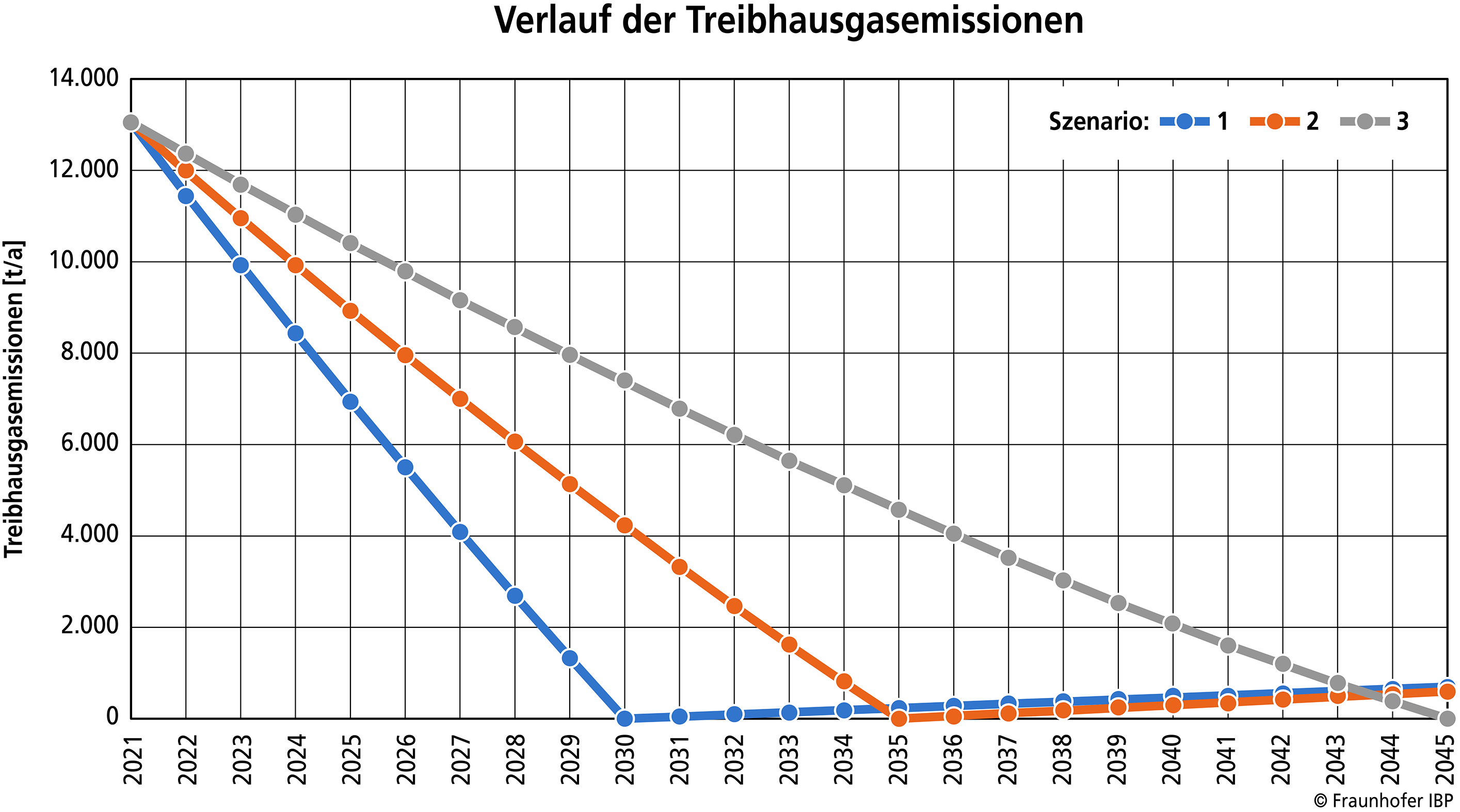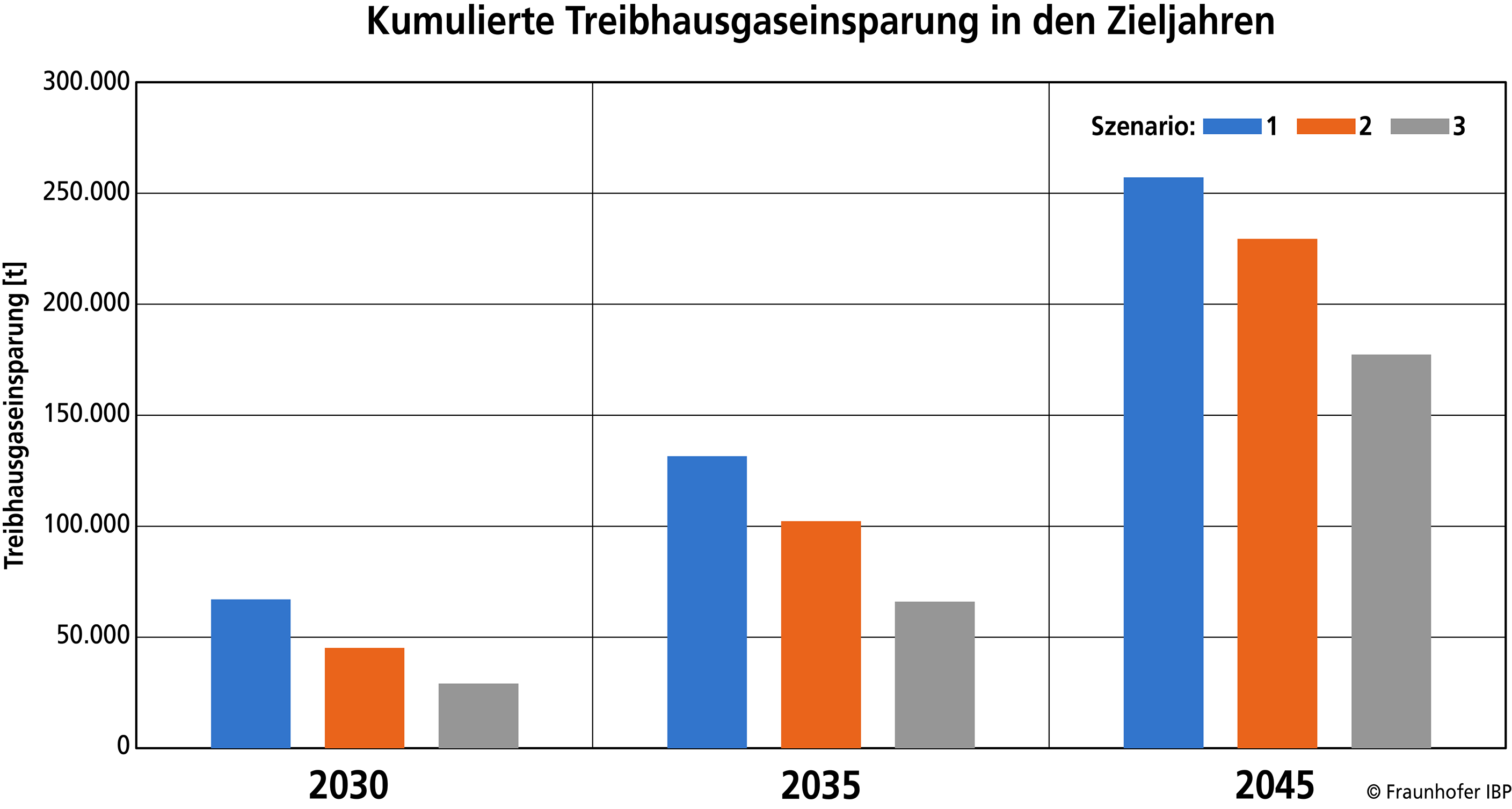The City of Oldenburg plans to implement ambitious climate protection targets. On behalf of the city, Fraunhofer IBP evaluated three different scenarios aimed at attaining climate neutrality of the city's own building stock, focusing on the necessary renovation scale and speed, the required photovoltaic surface area and the associated costs.
On the path to climate neutrality - assessment of scenarios for renovating the City of Oldenburg’s building stock to make it energy-efficient
Project goals
To make the operation of the City of Oldenburg's building stock climate neutral by 2045 at the latest. Three scenarios have been drawn up in collaboration with the city to accomplish this by different target years. The following parameters were defined:
- Renovation rate
- Structural renovation scale and planned installations (heating, ventilation, etc.)
- Planned new buildings
- Generation of heat and electricity from renewable energy
- Use of external compensation measures (certificates): in the case of Oldenburg, none
Based on the city's real estate database, the buildings were divided into clusters and mapped using representative building types. Any greenhouse gas emissions remaining as a function of the renovations were calculated per year and offset by photovoltaic electricity generated on the building roofs.
Current project status
Based on a structural renovation scale according to the BEG 40 EE standard (German federal funding scheme for making buildings energy efficient), coupled with outdoor air or geothermal heat pumps, and taking into account a less extensive renovation scale for listed buildings, three target years for climate neutrality were defined in line with the city's goals and resolutions - 2030, 2035 and 2045 - thus defining annual renovation rates between 4 and 11 %.
According to the calculations, all three renovation scenarios combined with photovoltaic systems on the building roofs achieve climate neutrality. However, for this, nearly all suitable roof space must be used. The scenarios differ in the size of PV surface area required, the amount of investment & planning costs and cumulative energy costs, as well as in the greenhouse gas emissions arising from gray energy (production, maintenance and disposal of building structures and installation technology). An earlier target year means renovating a higher number of buildings each year (with implications for the need for tradespeople and municipal jobs) and higher annual investment costs but, most importantly, a greater overall reduction in greenhouse gas emissions.


